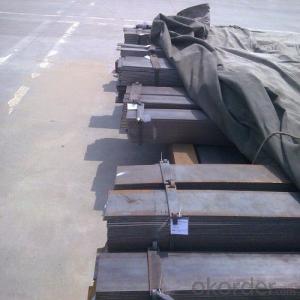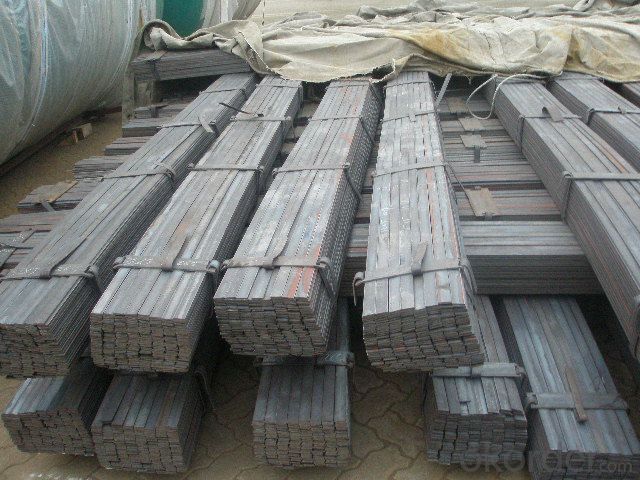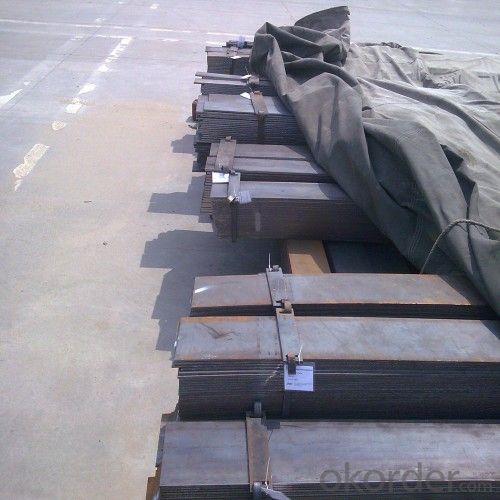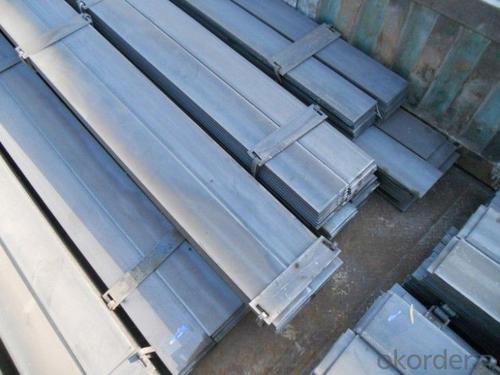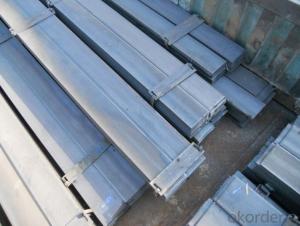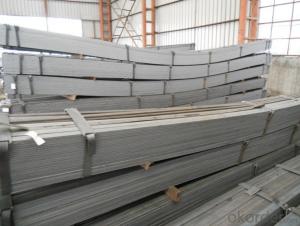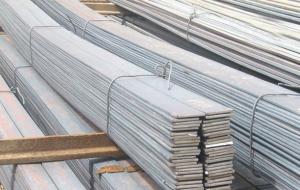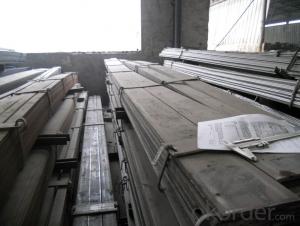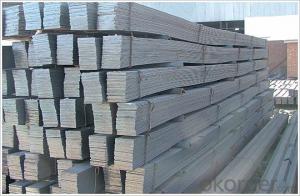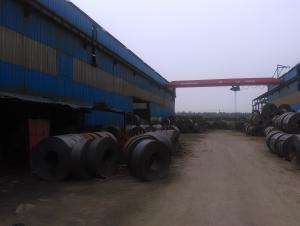Hot Rolled Steel Flat Bar in Material Grade Q235
- Loading Port:
- Tianjin
- Payment Terms:
- TT OR LC
- Min Order Qty:
- 25 m.t.
- Supply Capability:
- 10000 m.t./month
OKorder Service Pledge
OKorder Financial Service
You Might Also Like
Product Description:
OKorder is offering high quality Hot Rolled Steel Flat bars at great prices with worldwide shipping. Our supplier is a world-class manufacturer of steel, with our products utilized the world over. OKorder annually supplies products to European, North American and Asian markets. We provide quotations within 24 hours of receiving an inquiry and guarantee competitive prices.
Product Applications:
Hot Rolled Steel Flat bars are ideal for structural applications and are widely used in the construction of buildings and bridges, and the manufacturing, petrochemical, and transportation industries.
Product Advantages:
OKorder's Steel Flat bars are durable, strong, and resist corrosion.
Main Product Features:
· Premium quality
· Prompt delivery & seaworthy packing (30 days after receiving deposit)
· Corrosion resistance
· Can be recycled and reused
· Mill test certification
· Professional Service
· Competitive pricing
Product Specifications:
Manufacture: Hot rolled
Grade: Q195 – 235
Certificates: ISO, SGS, BV, CIQ
Length: 6m – 12m, as per customer request
Packaging: Export packing, nude packing, bundled
Chemical composition of Q235
Alloy No | Grade | Element(%) | ||||
C | Mn | S | P | Si | ||
Q235 | B | 0.12—0.20 | 0.3—0.7 | ≤0.045 | ≤0.045 | ≤0.3 |
Physical properties of Q235
Alloy No | Grade | Yielding strength point(Mpa) | Tensile strength (Mpa) | Elongation after fracture(%) | ||||||
Thickness (mm) | Thickness (mm) | |||||||||
≤16 | >16--40 | >40--60 | >60--100 | ≤16 | >16--40 | >40--60 | >60--100 | |||
≥ | ≥ | |||||||||
Q235 | B | 235 | 225 | 215 | 205 | 375--500 | 26 | 25 | 24 | 23 |
FAQ:
Q1: Why buy Materials & Equipment from OKorder.com?
A1: All products offered byOKorder.com are carefully selected from China's most reliable manufacturing enterprises. Through its ISO certifications, OKorder.com adheres to the highest standards and a commitment to supply chain safety and customer satisfaction.
Q2: How do we guarantee the quality of our products?
A2: We have established an advanced quality management system which conducts strict quality tests at every step, from raw materials to the final product. At the same time, we provide extensive follow-up service assurances as required.
Q3: How soon can we receive the product after purchase?
A3: Within three days of placing an order, we will begin production. The specific shipping date is dependent upon international and government factors, but is typically 7 to 10 workdays.
Images:

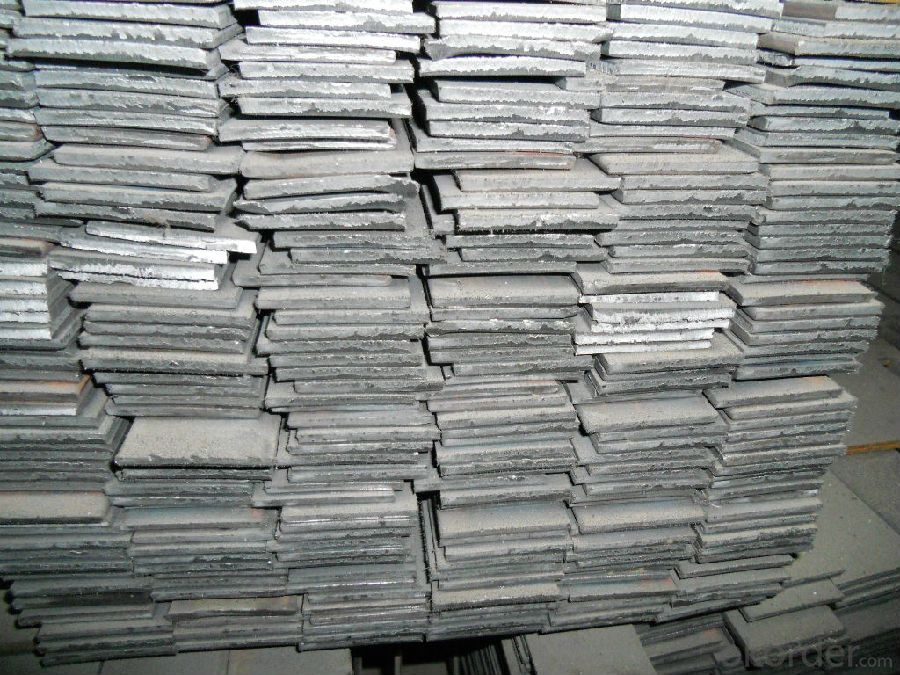
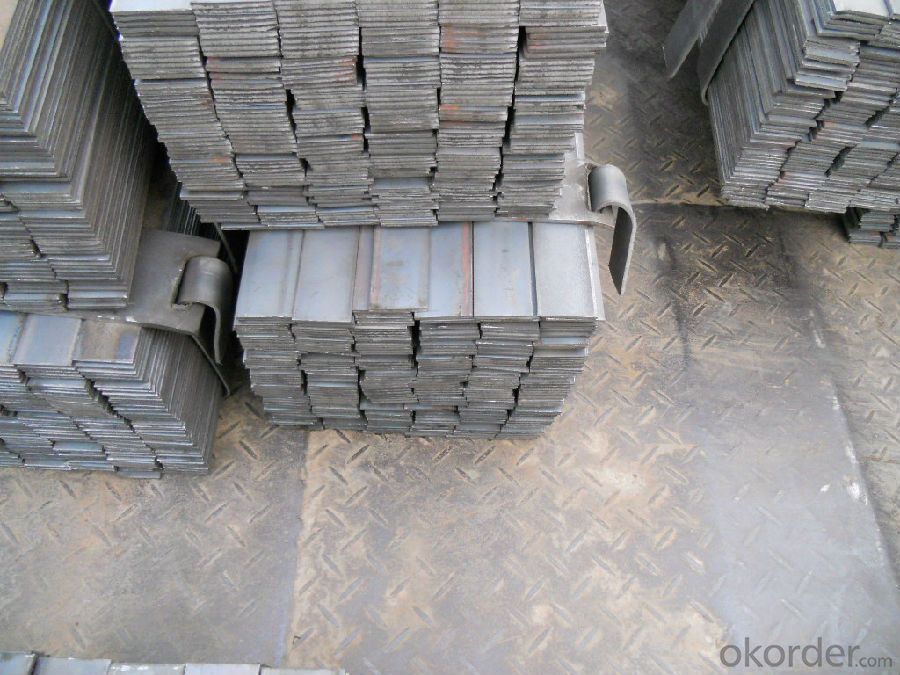
- Q: How do you remove rust from steel flat bars?
- To get rid of rust on steel flat bars, you can follow these steps: 1. Ensure your safety by wearing protective gloves and safety goggles while doing this task, in order to avoid potential harm. 2. Vigorously scrub the rusted areas using a wire brush or steel wool. This will effectively eliminate loose rust and dirt from the surface. 3. In case the rust is stubborn and cannot be removed by scrubbing alone, you have the option to apply a rust dissolver or rust remover solution. Make sure to carefully follow the instructions provided by the manufacturer and use it in a well-ventilated area. 4. Allow the rust dissolver to sit on the rusted area for the suggested duration. This will enable the solution to deeply penetrate and break down the rust. 5. Once the recommended time has elapsed, utilize the wire brush or steel wool to scrub the rusted area once again. This will assist in removing the loosened rust particles. 6. Thoroughly rinse the steel flat bars with water and then dry them using a clean cloth or towel. 7. After drying, inspect the bars to ensure the complete removal of all rust. If any rust spots remain, repeat the process until the steel surface is completely free from rust. 8. To prevent future rusting, you may choose to apply a rust inhibitor or protective coating on the steel flat bars. This will establish a barrier between the metal and moisture, thereby reducing the likelihood of rust formation. Remember, regular maintenance and keeping the steel flat bars dry will aid in preventing the recurrence of rust.
- Q: What is the difference between a steel flat bar and a steel angle bar?
- A steel flat bar and a steel angle bar are two different shapes of steel bars that serve distinct purposes in various applications. A steel flat bar, as the name suggests, is a rectangular-shaped bar with evenly distributed thickness throughout its length. It has a flat surface on the top and bottom, making it ideal for applications that require a level and smooth support or a structural component. Steel flat bars are commonly used in construction, manufacturing, and industrial settings where strength, stability, and load-bearing capacity are crucial. They can be easily welded, machined, or drilled, making them versatile for a wide range of applications. On the other hand, a steel angle bar, also known as an L-shaped bar, has two legs of equal or varying lengths that meet at a 90-degree angle. The legs can have the same or different thicknesses, depending on the desired strength and structural requirements. Steel angle bars are primarily used for structural support, reinforcement, and framing applications. They are commonly used to reinforce corners, joints, or edges of structures such as buildings, bridges, and machinery. The 90-degree angle provides additional strength and stability, making angle bars suitable for heavy-duty applications. In summary, the main difference between a steel flat bar and a steel angle bar lies in their shape and intended use. Steel flat bars have a flat surface throughout their length and are used for various applications that require a level and smooth support or structural component. Steel angle bars, on the other hand, have an L-shaped profile and are primarily used for structural support, reinforcement, and framing applications, especially where additional strength and stability are required.
- Q: Can steel flat bars be used for creating supports or brackets?
- Indeed, supports or brackets can be fashioned using steel flat bars. Due to their robustness and longevity, steel flat bars are frequently employed to bear substantial weights or ensure structural steadiness. Custom brackets or supports for an array of purposes, including shelves, furniture, machinery, or construction undertakings, can be effortlessly crafted or welded using them. The availability of steel flat bars in various sizes and thicknesses further enhances their adaptability in design and application.
- Q: Can steel flat bars be machined or drilled?
- Yes, steel flat bars can be machined or drilled. Steel is a versatile and durable material that can be easily worked with using various machining processes. Machining refers to the process of shaping or removing material from a workpiece using cutting tools, and drilling is one of the common machining operations used to create holes in a material. Steel flat bars can be machined or drilled to create specific shapes, sizes, or holes, depending on the desired application or design requirements. However, it is important to consider the hardness and thickness of the steel flat bar, as these factors can affect the choice of tools and machining techniques used.
- Q: What is the difference between a steel flat bar and a steel square bar?
- The main difference between a steel flat bar and a steel square bar lies in their shape. A steel flat bar has a rectangular cross-section, with width and thickness dimensions, while a steel square bar has a square cross-section, with equal width and thickness dimensions.
- Q: Can steel flat bars be hot-dip galvanized?
- Yes, steel flat bars can be hot-dip galvanized. Hot-dip galvanizing is a process where steel is immersed in a bath of molten zinc, which creates a protective coating on the surface of the steel. This coating helps to prevent rust and corrosion, making the steel more durable and long-lasting. Steel flat bars are commonly galvanized to enhance their resistance to environmental factors and increase their lifespan. Hot-dip galvanizing is a widely used method for protecting steel products, including flat bars, from the effects of moisture, chemicals, and other corrosive elements.
- Q: Can steel flat bars be used in the manufacturing of machinery components?
- Yes, steel flat bars can be used in the manufacturing of machinery components. Steel flat bars are versatile and can be easily shaped, cut, and welded to meet the specific requirements of machinery components. They provide strength and durability, making them suitable for various applications in the manufacturing industry.
- Q: Are steel flat bars suitable for welding to other materials?
- Steel flat bars are indeed suitable for welding to other materials. The versatility of steel allows for easy welding to a wide range of metals and materials. In the construction, manufacturing, and fabrication industries, steel flat bars are commonly used and can be welded to aluminum, stainless steel, and even other types of steel. This welding process enables the creation of robust and long-lasting structures or components. However, it is imperative to properly prepare the steel flat bars by cleaning and preparing the surface to achieve a successful weld. In addition, selecting the appropriate welding method and filler material is crucial to ensure a strong bond between the steel flat bar and the other material. In summary, steel flat bars are a reliable choice for welding to other materials due to their strength, versatility, and compatibility with various welding processes.
- Q: Can steel flat bars be used in the oil and gas industry?
- Yes, steel flat bars can be used in the oil and gas industry. Steel flat bars are versatile and commonly used in various industries due to their strength and durability. In the oil and gas industry, steel flat bars are utilized for a wide range of applications such as supports, frames, platforms, and structural components. These bars are often made from carbon steel or alloy steel, which provide excellent resistance to corrosion, high temperatures, and pressure. Additionally, steel flat bars can be easily welded and fabricated to meet specific project requirements, making them a suitable choice for the oil and gas industry.
- Q: What is the bending capacity of a steel flat bar?
- The ability of a steel flat bar to withstand bending forces without breaking or permanently deforming is known as its bending capacity. Several factors, including the steel's dimensions, thickness, composition, the applied load, and the type of bending being performed, influence the bending capacity. Steel flat bars generally have a high bending capacity due to their inherent strength and durability. To determine the specific bending capacity of a steel flat bar, engineers can calculate the maximum bending moment it can withstand before failure occurs. This calculation involves using engineering formulas and principles like the moment of inertia and the steel's yield strength. It should be noted that the bending capacity of a steel flat bar can vary depending on its grade or alloy. Different grades of steel have distinct mechanical properties, such as tensile strength and yield strength, which directly affect their bending capacity. Therefore, considering the specific grade and composition of the steel flat bar is crucial when assessing its bending capacity. Furthermore, the shape and dimensions of the steel flat bar also significantly impact its bending capacity. Wider and thicker flat bars generally have higher bending capacities compared to narrower and thinner ones. This is because the increased cross-sectional area provides more resistance against bending forces. In conclusion, the bending capacity of a steel flat bar is influenced by factors like the grade of steel, dimensions, and applied load. To accurately determine the bending capacity, consulting engineering references or professionals who can perform calculations based on the specific properties of the steel flat bar is recommended.
Send your message to us
Hot Rolled Steel Flat Bar in Material Grade Q235
- Loading Port:
- Tianjin
- Payment Terms:
- TT OR LC
- Min Order Qty:
- 25 m.t.
- Supply Capability:
- 10000 m.t./month
OKorder Service Pledge
OKorder Financial Service
Similar products
Hot products
Hot Searches
Related keywords

